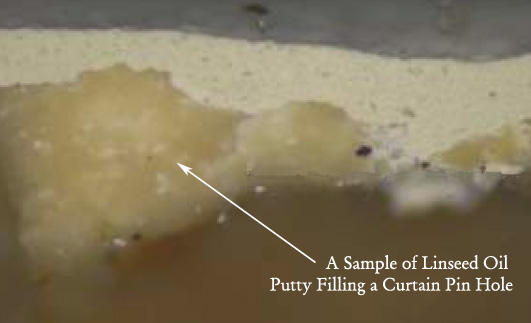
However, because several layers were missing from the Large Bedroom's trim, it was not the early paints that helped to identify the room's Madison-era pin holes but instead it was an early linseed-oil putty used to fill the holes. The same type of putty found in the Large Bedroom's pin holes, which has a distinctive color and composition, was also found filling other known Madison-period curtain pin holes in locations where the full paint history had survived. So by finding similar putty in the Large Bedroom, it was possible to accurately determine where the curtain pins were located in the Madison-era. As a result, the Large Dining Room curtain pin investigation illustrates that a comprehensive analysis of similar architectural features and evidence found throughout a historic building is often required to successfully date missing architectural elements.

©The Montpelier Foundation and Dr. Susan Buck
|
|
A photomicrograph of a paint sample taken from a window in the Large Bedroom. |







